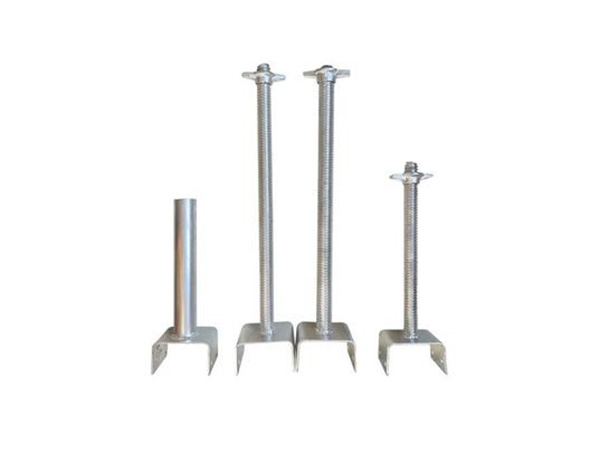- Site Navigation -

Screw Jack Support
The screw jacking support,also known as the screw-type adjustable prop,is a core load-bearing component in construction support systems that achieves height adjustment through screw......
The screw jacking support,also known as the screw-type adjustable prop,is a core load-bearing component in construction support systems that achieves height adjustment through screw transmission.Widely used in formwork support,scaffold erection,and temporary load-bearing scenarios,it is a key accessory for ensuring construction accuracy and structural safety.
Its structure is designed around the functions of"adjustment"and"load-bearing,"mainly consisting of three parts:First,the lead screw(threaded rod),mostly made of Q235 solid round steel or thick-walled steel pipe,with trapezoidal threads rolled on the surface—it serves as the core for height adjustment and load transmission.Second,the adjusting nut,forged from cast iron or steel with anti-slip grooves;rotating it drives the lead screw up and down.Third,the bearing assembly,including a top supporting plate(square/circular steel plate,used to support formwork or scaffold planks)and a bottom base(connected to vertical poles or the ground).Some models are also equipped with reinforcing ribs to enhance the strength of joint nodes.
Classified by the material of the lead screw,it can be divided into two types:Solid screw jacking supports have high strength and strong load-bearing capacity(single-point load-bearing 20-50kN),suitable for heavy-load scenarios such as large-span floor slabs and beam-column formwork;Hollow screw jacking supports are lightweight and easy to install,suitable for medium and low-load needs such as civil construction.
In construction,the screw jacking support plays a significant role:It can control the height error within±2mm through screw adjustment to accurately meet the requirements of formwork elevation or scaffold leveling;it can stably transmit vertical loads,transferring the self-weight of concrete,construction live loads,etc.,to the foundation through the supporting plate→lead screw→base;it can also compensate for installation errors of vertical poles,reducing rework.
Strict standards must be followed during use:Overloading is strictly prohibited,and models must be selected based on calculated loads;during installation,ensure the lead screw is vertical and the supporting plate is tightly attached to avoid eccentric loading;after adjustment,use a wrench to lock the nut to prevent loosening;conduct regular inspections—if defects such as lead screw bending or thread slipping occur,the support must be scrapped immediately and cannot be reused after repair,so as to eliminate potential safety hazards.








